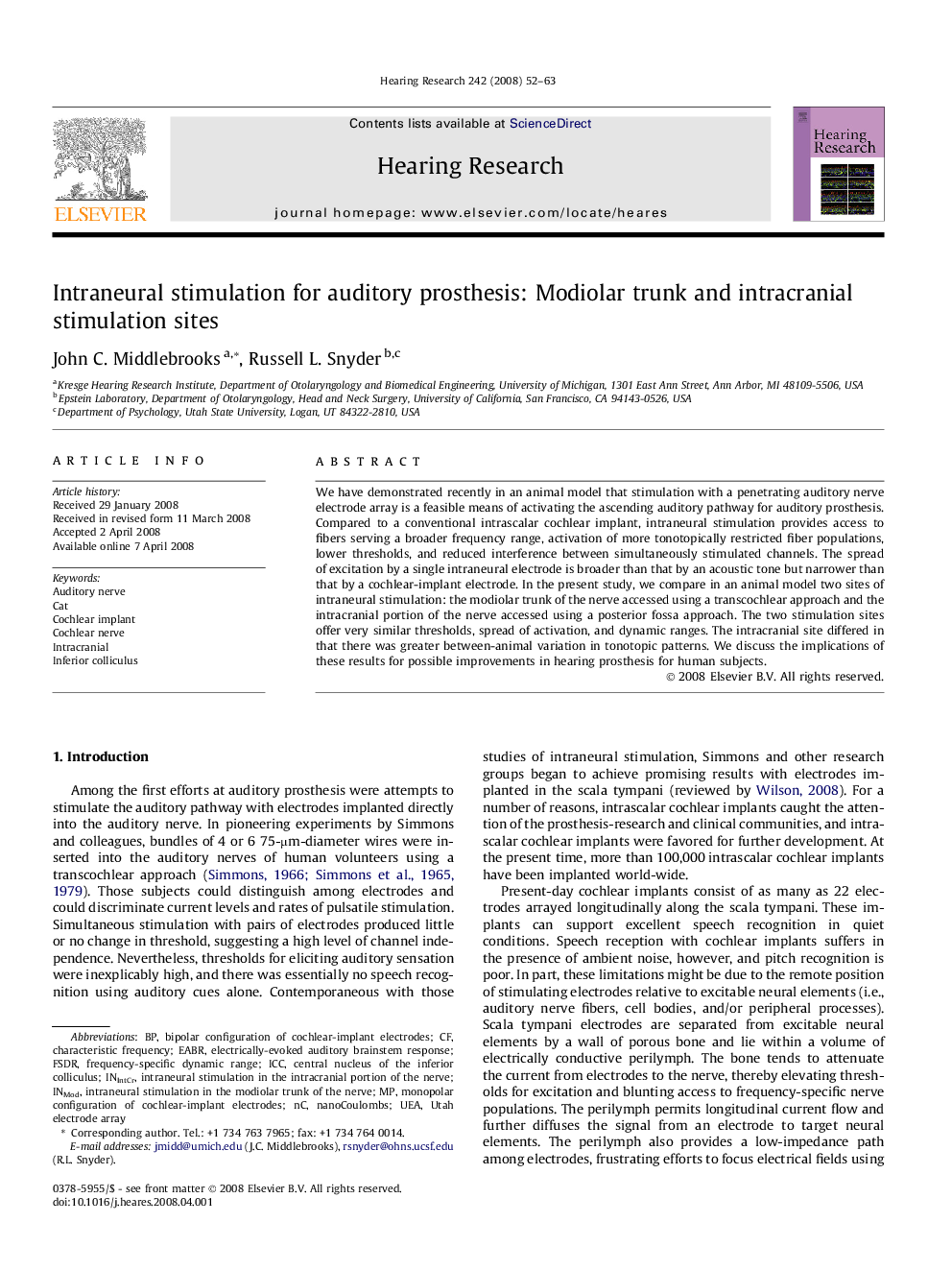| Article ID | Journal | Published Year | Pages | File Type |
|---|---|---|---|---|
| 4356054 | Hearing Research | 2008 | 12 Pages |
Abstract
We have demonstrated recently in an animal model that stimulation with a penetrating auditory nerve electrode array is a feasible means of activating the ascending auditory pathway for auditory prosthesis. Compared to a conventional intrascalar cochlear implant, intraneural stimulation provides access to fibers serving a broader frequency range, activation of more tonotopically restricted fiber populations, lower thresholds, and reduced interference between simultaneously stimulated channels. The spread of excitation by a single intraneural electrode is broader than that by an acoustic tone but narrower than that by a cochlear-implant electrode. In the present study, we compare in an animal model two sites of intraneural stimulation: the modiolar trunk of the nerve accessed using a transcochlear approach and the intracranial portion of the nerve accessed using a posterior fossa approach. The two stimulation sites offer very similar thresholds, spread of activation, and dynamic ranges. The intracranial site differed in that there was greater between-animal variation in tonotopic patterns. We discuss the implications of these results for possible improvements in hearing prosthesis for human subjects.
Keywords
Related Topics
Life Sciences
Neuroscience
Sensory Systems
Authors
John C. Middlebrooks, Russell L. Snyder,
